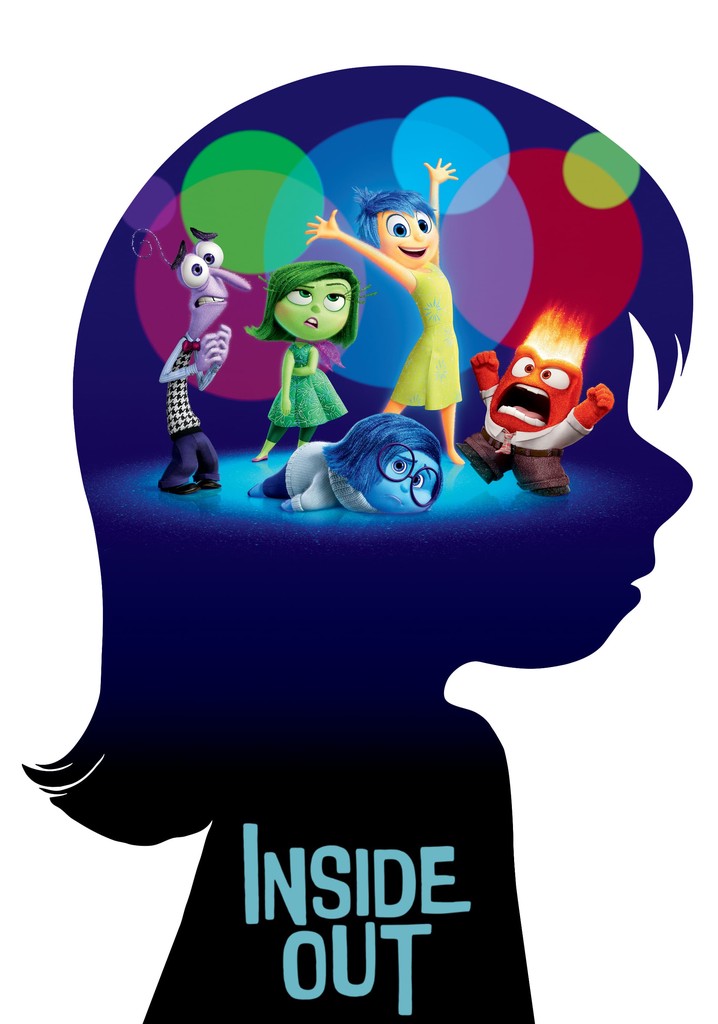
Emotions are complex. In short, emotions are defined as “self-organizing patterns of an organism, the collection of responses, many of which are publicly observable”. We all express emotions, and without them, we wouldn’t function as a species. With this in mind, the two things I watched this week, being the movie “Inside Out”, and the Star Trek: The Next Generation episode “Man of the People”, truly know how to convey emotions in a creative and respectable way.
The first thing that I watched was the movie “Inside Out”. I haven’t watched this movie ever since it came out in theaters back in 2015. I still remember that day, my sister and I watching the movie, and her crying when Bing Bong dies, and if I’m gonna be honest, I almost got teary eyed when that happened. One thing I wanna focus on are the emotion characters inside Riley’s head. The characters on Joy, Sadness, Disgust, Anger and Fear are the perfect example of basic emotions, which are defined as “a special class of emotions out if which all other emotions are compounded”. Each emotion in Riley’s head has a certain trait that they express, simplifying who they are. For example, Fear is always jumpy over the smallest things, Sadness always has a melancholy personality, which ends up being important at the end of the film, and Anger always has a mad tone to his voice. According to Pete Doctor, the director of the film, there were going to be more core emotions from the five in the film, including surprise, pride, and trust, but they were scrapped in favor of the core emotions in the movie.

I then watched the Star Trek: The Next Generation episode “Man of the People”. Honestly, after a few weeks of watching Star Trek, I think the show is starting to grow on me, and I might want to check out the show after classes are done. In this episode, the Enterprise brings in two people from a transport ship near Rekag-Seronia, Ambassador Ves Alkar, a Lumerian representative for the Federation and Sev Maylor, his mother, who seems to sense the emotions in others. So, Sev Maylor, and Deanna Troi, the Enterprise’s counselor are both empaths, which I found hilarious, because I mentioned the whole concept of empaths in one of my previous blog posts. Anyway, when Sev Maylor dies, Ves Alkar and Troi perform a grieving ritual, which was Alkar’s excuse to take over Troi’s body and dump all of his negative emotions on to her. Troi”s slow descent is a perfect example of James-Lange’s theory of emotion. In short, the theory states that “bodily changes come first and form the basis of an emotional experience. Thus, emotions are caused by bodily sensations”. So, as Troi is rapidly aging, her negative emotions are becoming for erratic, causing the aging process to rapidly advance until Troi dies. So, when Ves Alkar gets all his negative emotions placed back onto him at the end of the episode, his body rapidly ages until death.

3 thoughts on “Analysis #4: Emotions”
Hi Hasan,
Yes, emotions are a necessary part of our cognitive and social life. Good observation that the emotions that are personified in Riley’s mind are the so-called “Basic Emotions.” Interesting that they were thinking of incorporating additional emotions. That probably would have gotten a bit unwieldy, but it does demonstrate some of the controversy surrounding the idea of basic emotions. As you learned in this week’s VT, though, the theory of basic emotions is somewhat nebulous—and there is some disagreement about how many basic emotions there are and what they are. Can you see a bit more about how you see these emotions portrayed and functioning within the brain? How does it relate to some of the information that you learned about emotions in this weeks’ VT?
I am delighted to hear that Star Trek is growing on you—especially because this was definitely an odder episode (though one that I not only enjoy, but thought was very relevant to our course content)! There is a reason why it remains a very beloved show. I love that you are thinking about the role of the body when it comes to emotions. Indeed, that is one of the reasons that theorists of 4-E cognition reject the cybernetic or disembodied view of the mind. If emotions are integral to their cognition (which empirical research in neuroscience suggests they are!), then we can’t have a mind without emotions, and we can’t have emotions without a body. This is part of the reason why we are so bad at predicating what AI would think like—an artificial, disembodied mind would be very different from the ways that our mind work.
Jessica Hautsch
I like that you did some outside research or already knew the director wanted to include more emotions, but I’m glad they scrapped them! The five they chose I really believe are the core, basic emotions that more complex emotions stem from, like surprise!
Great analysis of how the Star Trek episode and Deanna’s aging body tie into the James Lange Theory of Emotion. This show is also growing on me, not saying I look forward to each episode though, haha.
mkrulder
Hi Hasan,
Great analysis. The scene where Bing Bong disappeared made me cry. As you’ve noticed, the emotions personified in Riley’s mind are the five basic emotions. Voicethread also mentioned that in addition to the seven basic emotions, including happiness, sadness, and fear, there are as many as 12 more complex emotions. As you said, feelings are complicated and inseparable from our cognition and society. Finally, you analyze Deanna’s physical aging and James-Lange’s theory of emotion in this Star Trek episode. Wonderful! I also love that you mentioned the role of empathy, especially that Alkar’s death was because he transferred the negative emotions to Troi and put them back on himself.
yichen8